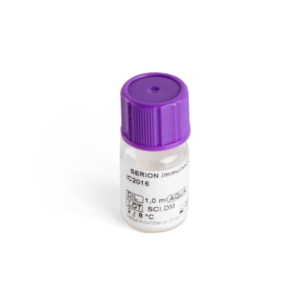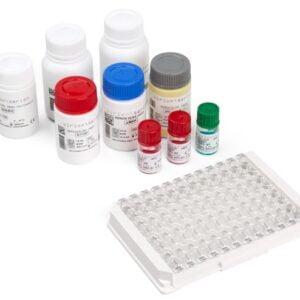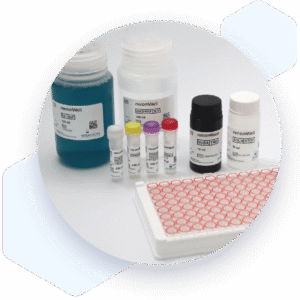| Weight | 1 lbs |
|---|---|
| Dimensions | 9 × 5 × 2 in |
| target | Leptospira reactive IgM |
| species reactivity | Leptospira |
| applications | ELISA |
| assay type | Indirect & quantitative |
| available sizes | 96 tests |
Leptospira IgM ELISA Kit ESR125M
$355.00
RF-Absorbent Z200 for use with IgM ELISA kits
Did you know that RF Absorbent Z200 is recommended for the removal of IgM rheumatoid factors from serum and plasma samples prior to the detection of pathogen-specific IgM? Consider adding it to your cart for improved signal specificity. For more details, please refer to the IgM ELISA kit protocol.
- Virion/Serion Diagnostic Kit for research use (RUO)
- Leptospira IgM ELISA Kit
- Suitable for IgM detection
- Ready-to-use
- 96 tests
Leptospira IgM ELISA Kit ESR125M
| kit | ||||||||||||||||||
|---|---|---|---|---|---|---|---|---|---|---|---|---|---|---|---|---|---|---|
| Assay type Indirect ELISA | ||||||||||||||||||
| Research area Infectious Disease | ||||||||||||||||||
| Sample type Serum, plasma, whole blood | ||||||||||||||||||
| Notes Pretreatment of samples with RF-Absorbent (Z200) is recommended for use with IgM ELISA kits to eliminate presence of sample rheumatoid factors and possible false negative results. | ||||||||||||||||||
Components
| ||||||||||||||||||
| Storage Store at 2-8°C. | ||||||||||||||||||
| Associated products Leptospira biflexa Antigen (BA125VS) Leptospira IgG Control Serum (BC125G) Leptospira IgM Control Serum (BC125M) Leptospira IgG ELISA Kit (ESR125G) Leptospira IgM ELISA Kit (ESR125M) |
| target relevance |
|---|
| Organism Leptospira species |
| Protein names Leptospira |
| Structure and strains Leptospira is a genus of spirochaete bacteria, including a small number of pathogenic and saprophytic species. Leptospira was first observed in 1907 in kidney tissue slices of a leptospirosis victim who was described as having died of "yellow fever". |
| Detection and diagnosis During the initial disease phase, isolation of leptospira from blood samples is possible. However, cultivation of the pathogen is often too time-consuming to allow for an effective antibiotic treatment. Consequently, diagnosis based on antibody detection such as Microagglutination tests (Gold Standard), CFT or ELISA is more frequently employed to affect a more rapid diagnosis of Leptospira infections. Once the second disease phase has started, the only effective diagnostic methodology is serology. IgM and IgG are detectable for a considerable period, however, less than 90% of patients actually produce IgG antibodies. |
Data
Publications
| pmid | title | authors | citation |
|---|---|---|---|
| We haven't added any publications to our database yet. | |||
Protocols
| relevant to this product |
|---|
| ESR125M protocol |
Documents
| # | ||
|---|---|---|
| EP0081 | Safety Data Sheet | QC certificate |
| EP0133 | Safety Data Sheet | QC certificate |
Only logged in customers who have purchased this product may leave a review.




Reviews
There are no reviews yet.